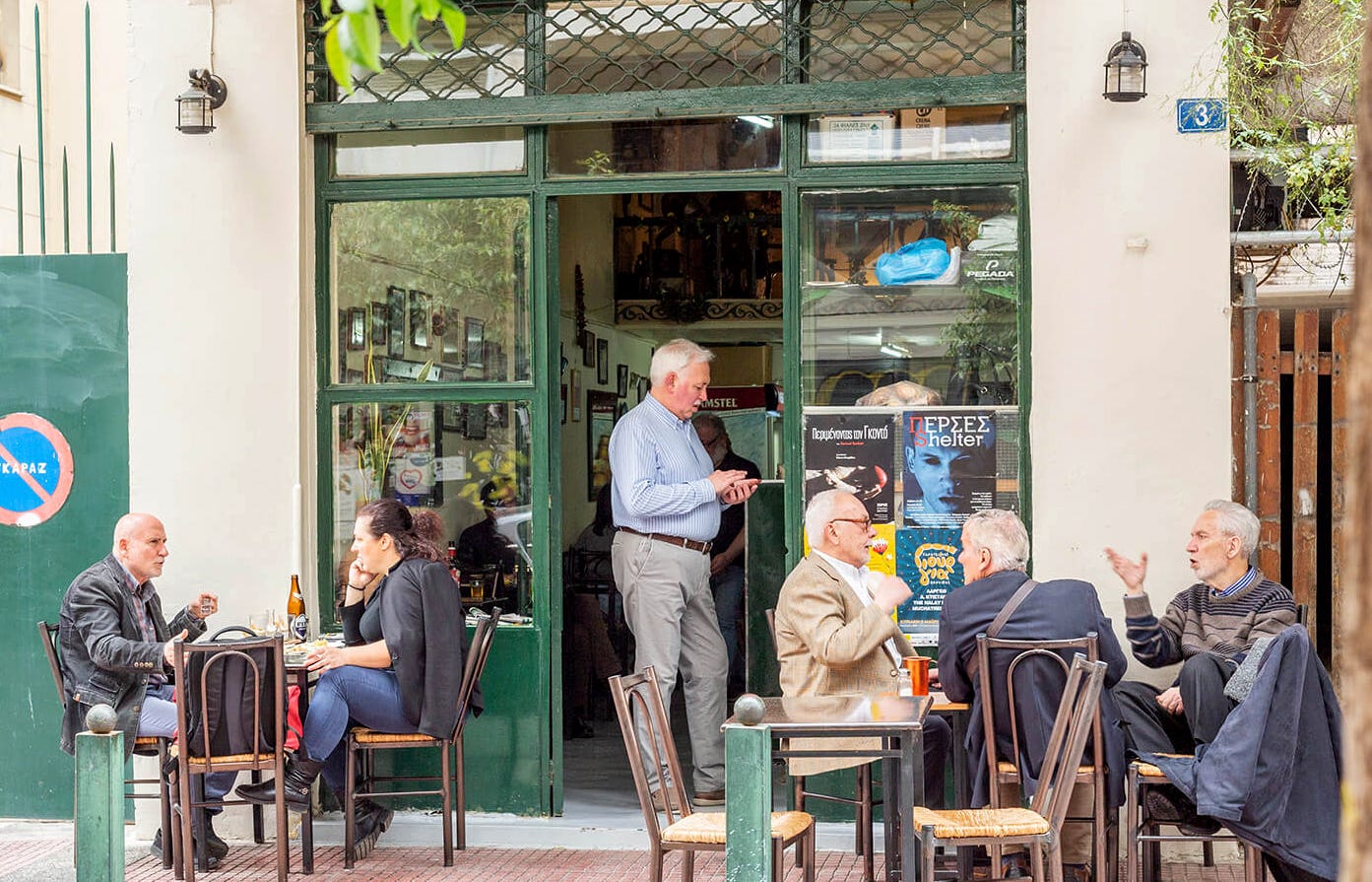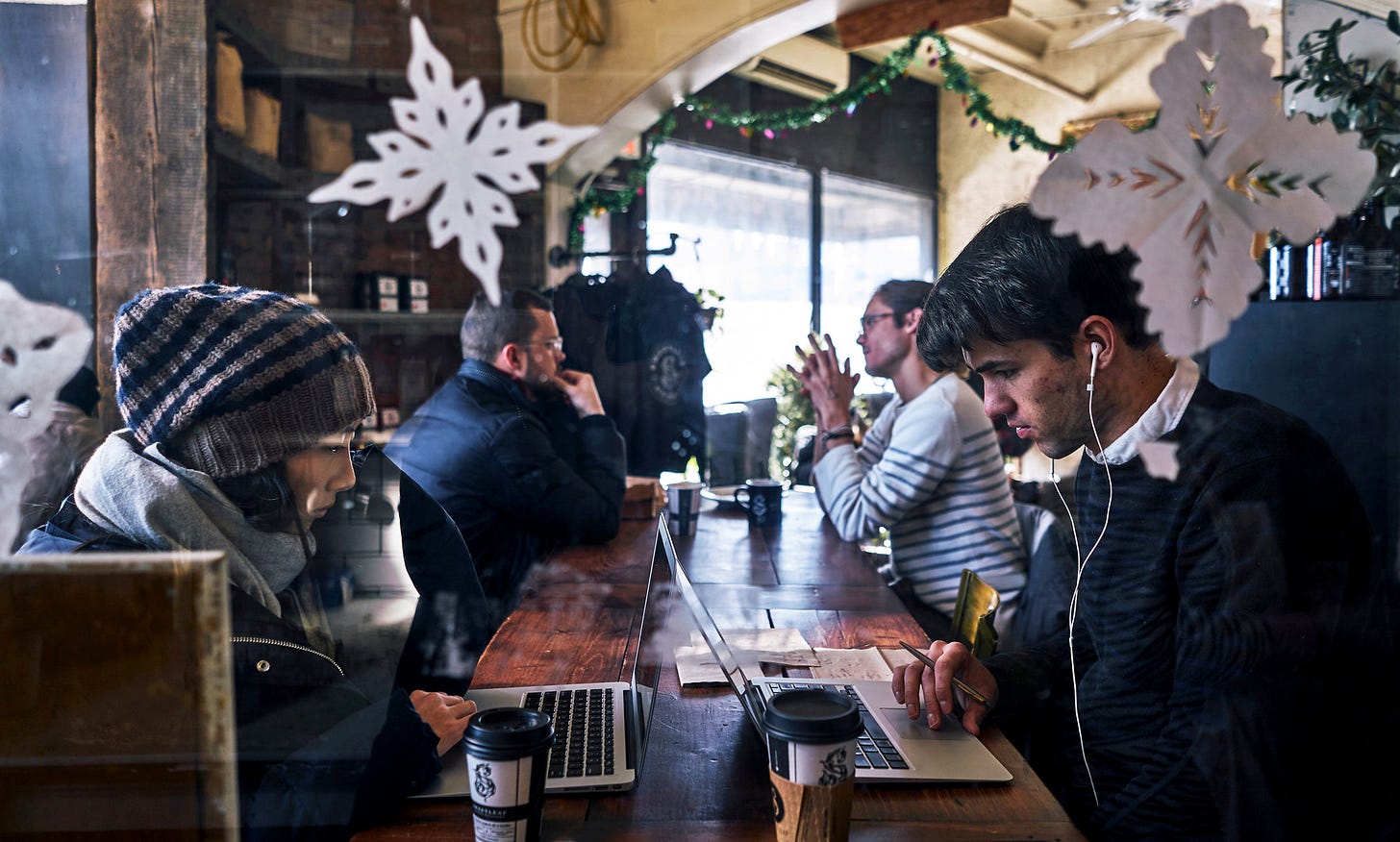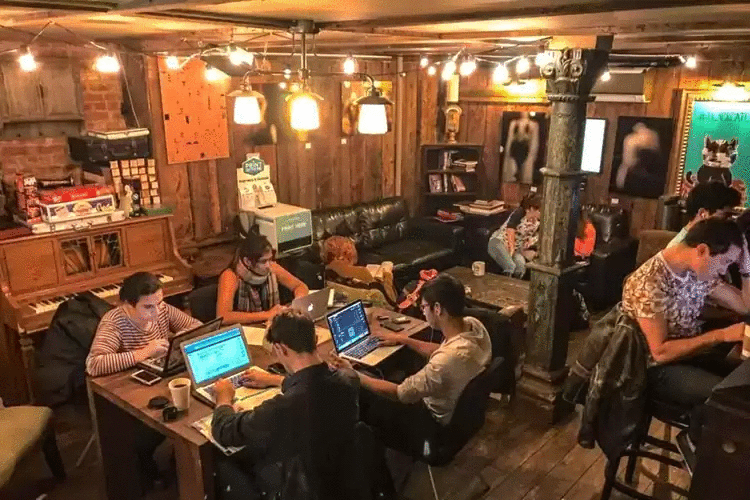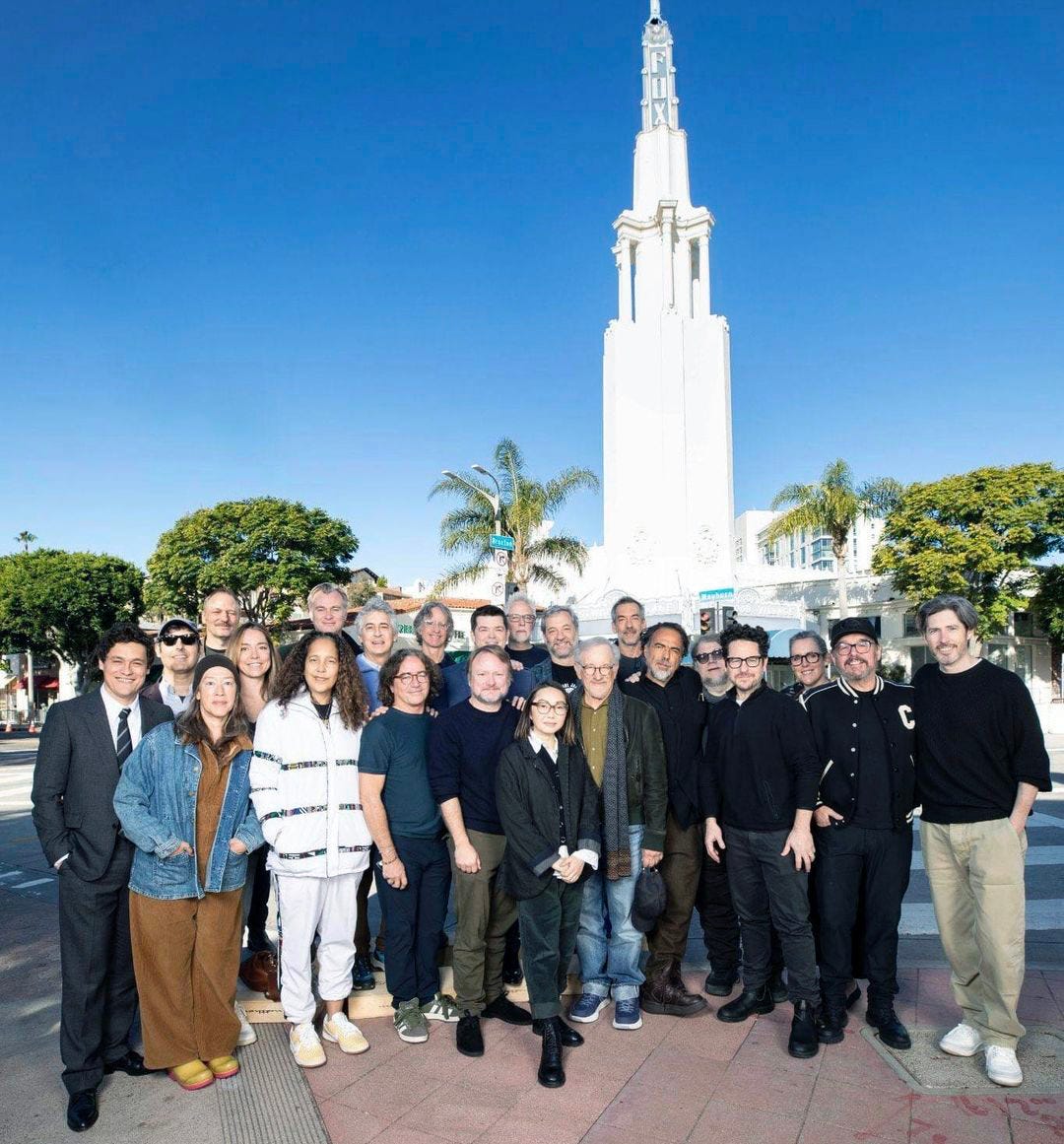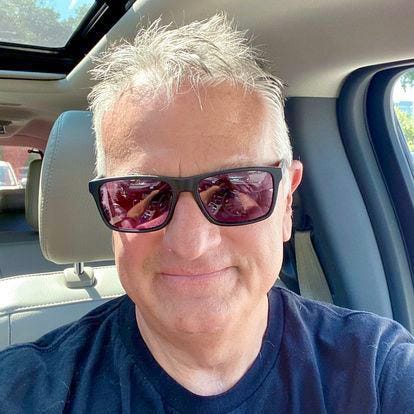By now, most of you know I’m 110 percent of Greek heritage. No, not Greeks like being a member of a fraternity. That’s a whole other magilla of story that you’ll want to ask me about in person. But I’m a real Greek, like in the country of Greece. Souvlaki, ouzo, gyros, baklava, always screaming opa, short tempers, and lengthy weddings.
That kind of Greek.
Most importantly, I believe kafeneio, a public meeting place, is the single greatest word in Greek vernacular. And you don’t have to be a G-man to relate to this way of living; most of us in the ad world do it daily, whether in a coffee shop, at lunch, cocktail hour, over a Zoom call, or, heavens forbid, over Slack. Whatever your daily means of catching up with family, friends or co-workers, the kafeneio never lets you down.
In my homeland, most traditional kafeneios are found in almost every Greek village, town or island. They aren’t just for coffee. If they were, there would be far too many buzzed Greeks. They are what I like to call “meet-ups,” even in my corner of the U.S., far away from our small village south of Sparta. We have meet-ups daily using all the above-mentioned methods—but not all at once.
When we are in New York City, for example, at least twice a day we hold such kafeneios. Usually, early morning before the day kicks into gear, these little meets are like warm-ups for the later, grander appointments such as presentations, conferences or, my favorite, lunch. In Manhattan alone, there’s never a shortage of kafeneio hangouts. Every agency and OOH company has its favs, usually within walking distance.
When lumbering around midtown, my go-to spots are Gregory’s Coffee, Ground Central Coffee, Joe Coffee Company, and any Greek diner where your mug gets filled up for hours. But there are plenty. Dive bars, like Jimmy’s Corner on West 44th or the Subway Inn on 2nd Avenue, also serve as a perfect kafeneio spot. They’re dark and intimate. Hungry? Buy a bag of chips.
Greeks date our kafeneios through hundreds of years, serving as gathering places for backgammon, chess, checkers, card games, liquors, and coffee. They talked incessantly, often loudly, and sometimes argued and fought, mostly over politics. Instead of a deck of cards, dice or boards, these days we bring iPads, iPhones, laptops and vape pens. The carry-along items may have changed, but the beverages haven’t—coffee or booze, sometimes both.
At my home office in Maryland today, I had a “modified” kafeteria (Greek slang for modern café) with two co-workers over Slack, two Zoom calls, one with my daughter before she drove off to school, plus another with the dog, four potential advertising clients, and the most formidable kafeneio around, the toughest of all coffee meet-ups… my wife. All without leaving the house.
While my kafeneios didn’t change location, the beverages and people changed. So far, I’m on my 8th such one. While they don’t last quite as long as those kafeneios in the small, mountainous villages, our current little café ambiance of kafeneios gets us by. They certainly did over covid, where we still had our kafeneio during morning coffee meetings with colleagues—from happy hours where we popped our beers in front of laptops or sat 10 feet from each other in a park or backyard. We may or may not have been wearing pants, but we got through it. The concept of the kafeneio never dies. Only the surroundings have changed.
Where is your next kafeneio? Maybe schedule a “premeditated kafeneio” for Friday afternoon. Get a few friends or colleagues, perhaps a client or two, and throw down that brown sugar oat milk shaken double espresso. Or, if you’re like me, have a strong black coffee with three cubes and a lovely, old-school kafeneio. A cold shot of tsipouro may not be too bad, either. Go ahead, I dare you.
And you never know—you may sell something.
Hey, I’m not done yet, there’s more…
• Who Says Nutin’s Free?—Think what you may about LinkNYC’s digitals, but those 2001 Space Odyssey-looking monolithic kiosks usually placed in the middle of NYC sidewalks have endured. Since 2015, the 9½-foot-tall duel-sided digitals have struggled to replace pay phone stations on city sidewalks. But I always thought parent company Intersection’s play here would be the perfect spot for smaller local businesses and community groups to use instead of relying on national advertisers for all the revenue.
Started in 2017, LinkLocal has impacted more than 2,000 smaller local businesses that benefited from having access to promoting their stores and services. The kiosks still offer sidewalk-based free internet and wifi. The kicker? Free ad spots on four screens over two kiosks. Yes, they are free. Small businesses receive spots at the two nearest Link kiosks, where their ads can cycle through on an endless rotation, using templates provided by Link. Brilliant.
• OOH Media Doesn’t Use Bots—Mashable recently reported that most of the internet traffic from Twitter/X may have been fake during the Super Bowl weekend. X claimed it was one of the biggest events ever on the platform, touting 10 billion impressions. However, Mashable said a leading cybersecurity firm, CHEQ, which tracks bots and fake users, refutes X’s claim that over 75 percent of traffic during the Super Bowl weekend was not real. Who gets hurt in all this? Advertisers, of course. Bots filled the airwaves to the point where CHEQ’s CEO said, “I’ve never, ever, ever, ever seen anything even remotely close.” Why isn’t this a larger story in the ad industry? Why didn’t our fellow OOH bloggers cover this news? The OOH/DOOH community should use this as a rallying cry for the rest of 2024, repeating this astounding faux pas by X. When will the phrase “style over substance” stop haunting our industry, and we push back on these fake eyeballs?
• Saving an Icon—My love for OOH media and motion picture theaters goes hand in hand. We need both and lots of them. Recently, the historic Westwood Village Theater in Los Angeles was saved from becoming another drug store when it was bought by a group of 35 filmmakers and actors, including Steven Spielberg, J.J. Abrams, Chris Nolan, Bradley Cooper, Seth Rogan, Jason Reitman, Lulu Wang and Guillermo del Toro. The theater is a beautiful 93-year-old structure with 1,300 seats capable of projecting 70mm film with upgraded sound. My cousin, production designer Barb Ling, filmed there during the making of “Once Upon a Time in Hollywood,” winning an Oscar. The theatre has an iconic 170-foot Spanish Revival Art Deco tower that serves as a guiding light for movie aficionados. Big billboards, big movie screens, quite the love affair. Cheers to supporting them all.
Nick Coston has been in the advertising industry for over 35 years. He’s worked at newspapers, magazines, OOH/DOOH companies, programmatic platforms, and ground-breaking ad tech companies, including Washingtonian, Washington Times, New Republic, USA Today Weekend, Clear Channel Outdoor, The Neuron, and Hypercell. Currently SVP media sales/strategy at Smartify Media, Nick also spent 10 years buying OOH for a top 10 national advertiser. He resides with his family in Dayton, Maryland, and has been musing about the Outdoor Media industry for over five years.




